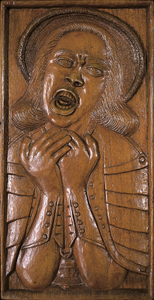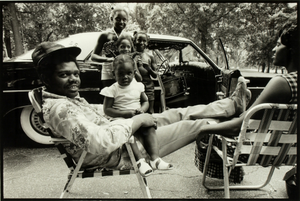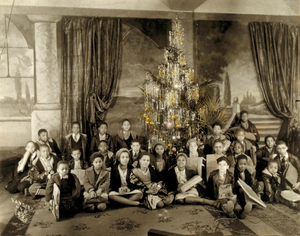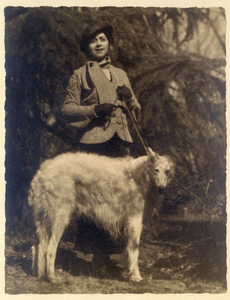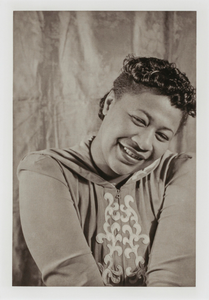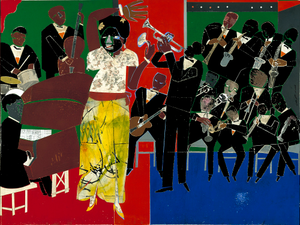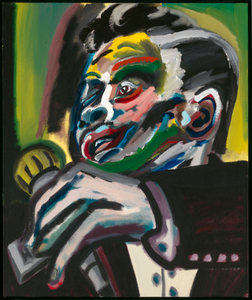Description
Daniel Pressley learned the art of wood carving when he was a boy, from his grandfather who was a former slave. In South Carolina during the first half of the twentieth century, African-American families lived under the pall of racism. Pressley moved to New York City in 1953, like many African Americans of the era, in search of a better life. He became deft at compressing profound moments of human emotion into tight, controlled carvings. This carving shows a singer at the wake for Martin Luther King Jr., just after he was assassinated in 1968. Her clasped hands and anguished expression evoke the widespread passion and grief over the death of a hero to black Americans.Daniel Pressley believed fervently in the civil rights movement, which he experienced in New York in the 1950s and 60s. This carving shows a singer at the wake for Martin Luther King Jr. after his assassination in 1968. The figure’s clasped hands and anguished expression evoke the passion and grief that many people felt over the tragic death of a hero to black Americans.
Varnished Walnut Relief
Smithsonian American Art Museum, Gift of Chuck and Jan Rosenak and museum purchase through the Luisita L. and Franz H. Denghausen Endowment
Record Contributed By
Smithsonian American Art MuseumRecord Harvested From
Smithsonian InstitutionKeywords
- African American
- African Americans
- Ceremony
- Civil Rights
- Civil Rights Movement
- Cvil Rights
- Easter
- Entertainers
- Ethnic
- Ethnicity
- Figure Female
- Funeral
- History
- Holiday
- Holidays
- Homage
- King, Martin Luther
- Music
- Performing Arts
- Pressley, Daniel
- Rites And Ceremonies
- United States
- Voice
- Waist Length
